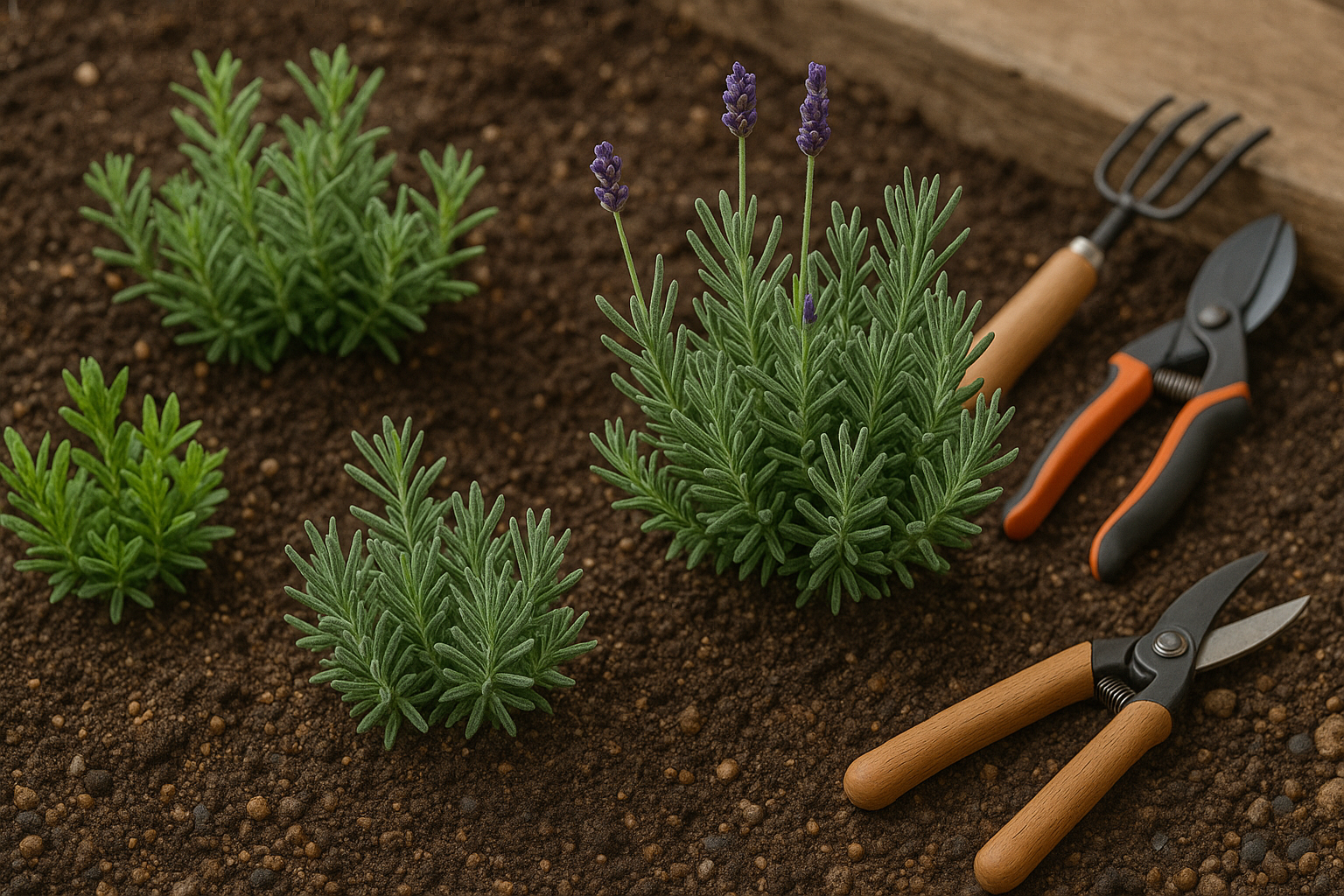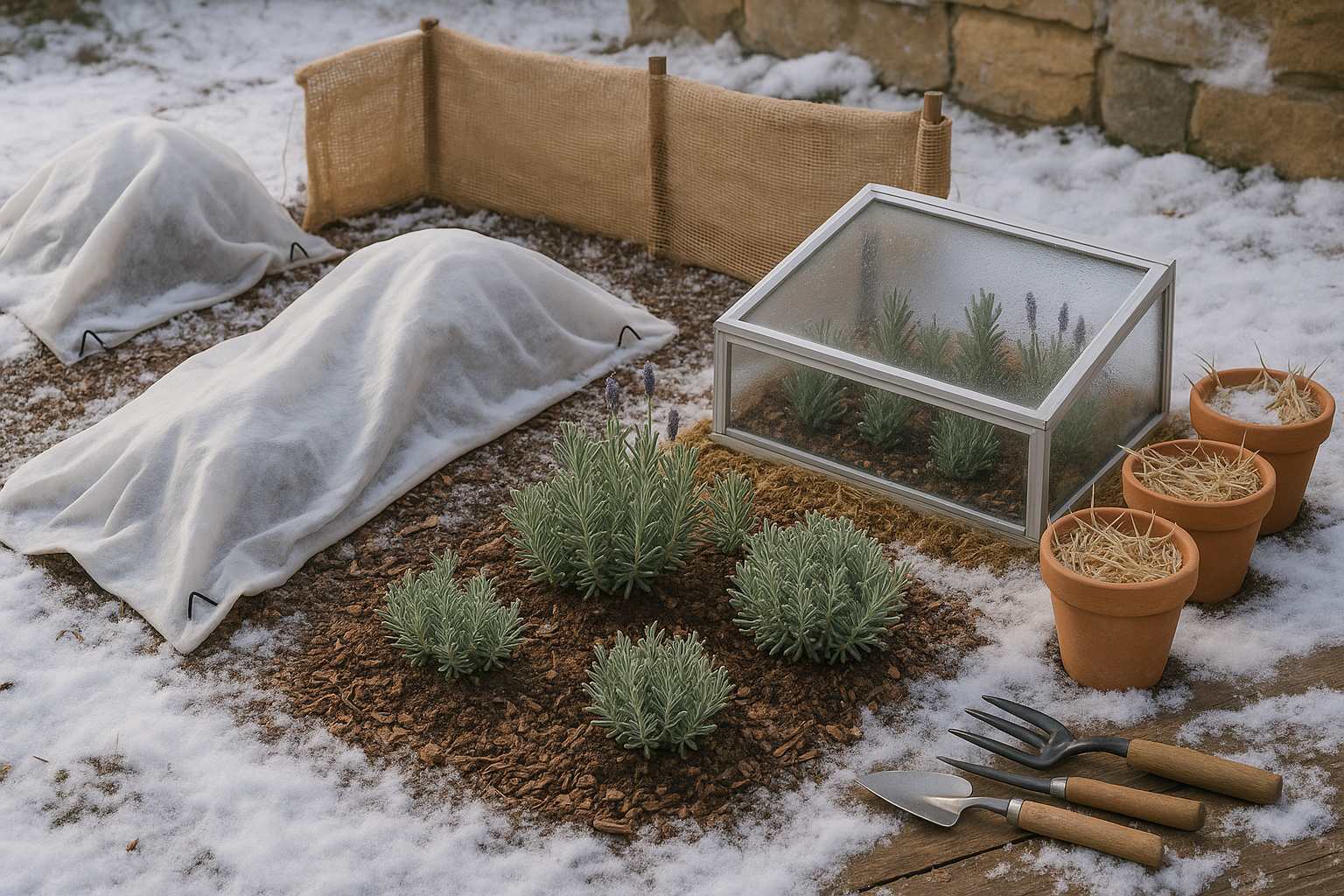Introduction
Growing lavender in winter can be both a challenge and a triumph for cold-climate gardeners. While lavender is often associated with sun-soaked hillsides and balmy breezes, those passionate about this fragrant herb can still enjoy its beauty and aroma, even when frost threatens. Winter, however, brings real obstacles—cold snaps, excess moisture, and sudden thaws are all hazards that can cause root rot or kill lavender outright.
Gardeners must closely monitor soil drainage, watch out for waterlogged roots, and protect against harsh winds and freezing temperatures. Despite these hurdles, successful overwintering means enjoying a thriving lavender plant come spring—a true reward for your effort.
In this post, we’ll cover proven winter protection strategies: from choosing hardy lavender varieties and effective mulching techniques to smart pruning and creative shelter options like cold frames or garden fleece. With some planning and care, even gardeners in cold climates can keep their lavender healthy through the deep freeze, setting the stage for lush growth and profuse blooms when warm weather returns.
Understanding Lavender

Lavender is a fragrant, versatile herb celebrated for its soothing scent, beautiful blooms, and wide range of uses—from culinary to ornamental. Most lavender varieties thrive in full sun and well-drained, slightly alkaline soil, making them a staple for gardeners who want low-maintenance yet striking plants.
While many associate lavender with Mediterranean climates, some types are surprisingly tough and can handle chilly weather. The key is choosing the right variety.
Choosing the Right Variety
English lavender (Lavandula angustifolia) stands out as the most cold-hardy option, often surviving in USDA hardiness zones 5 to 8—sometimes even zone 4 with protective winter mulch. Other hardy types include Lavandin (Lavandula x intermedia) and some dwarf cultivars such as ‘Munstead’ and ‘Hidcote.’ These varieties combine floral beauty with resilience, tolerating frosty winters if given proper drainage and a sheltered spot away from harsh winds.
Understanding USDA Hardiness Zones
Understanding USDA hardiness zones is crucial: these mapped regions show average winter low temperatures, guiding gardeners to plants likely to survive their local climate. For example, if you live in zone 5 (average lows of -20°F to -10°F), select English lavender or similarly rated cultivars.
Tips for Colder Climates
- Plant near a south-facing wall to maximize warmth.
- Add a thick layer of mulch to protect roots during winter.
By matching lavender types to your region’s zone and taking a few protective steps, you can enjoy flourishing lavender beds even where winters bite.
Key Winter Challenges for Lavender
Winter can be tough on lavender, especially in regions with unpredictable weather. The biggest risks include freezing and thawing cycles, where repeated warming and refreezing can heave plants out of the ground, damaging their delicate roots. Excess moisture is another hazard—lavender hates “wet feet,” so overly damp soil during winter can quickly lead to root rot and plant decline. Harsh winds also take a toll by drying out exposed foliage, especially if plants aren’t sheltered or mulched.
Much of lavender’s winter survival depends on how well you prepare it in the fall. Cutting back growth lightly (never too hard), avoiding excess fertilizers late in the season, and ensuring soil drains well all reduce vulnerability. Raised beds, gravel mulches, or amending heavy soils with sand or perlite are smart ways to keep roots dry and happy.
Watch for visible signs of trouble such as blackened, mushy stems—which hint at rot—or silvery, brittle leaves dried by wind or freeze. If whole branches turn brown and snap easily, it may indicate winterkill. Checking your plants early in spring helps you spot damage before new growth starts. With proactive care and close observation, lavender can weather winter and come back strong when warmth returns.
Preparing Lavender for Winter
Getting your lavender ready for winter is key to ensuring those fragrant blooms return next season. Start preparations well before your first expected frost date; for many regions, this means late summer to early fall, but always check your local USDA zone for specifics.
Begin by lightly pruning the plants, removing about one-third of the height and trimming away any spent blooms or leggy stems. This helps maintain shape without cutting into old wood, which can hurt future growth. Next, ease up on watering; lavender dislikes soggy soil in winter, so let the ground dry out between waterings and cut the frequency in half as temperatures drop.
Improving drainage is critical, especially if you live where winters are wet. Amend the soil around plants with a bit of sand or small gravel to keep their roots from sitting in water, which can quickly lead to rot.
Once the pruning and drainage are set, it’s time for mulching—a crucial step for insulation. Use materials like pine needles, finely shredded bark, or dry leaves, aiming for a layer two to three inches thick around the base of each lavender plant. Be careful not to pile mulch directly against the stems, as this can trap moisture and potentially cause disease.
The mulch works as a cozy blanket, keeping soil temperatures stable and protecting roots from sudden freezes. In colder climates (Zones 5 and below), you might also consider placing a layer of breathable garden fabric or burlap over the mulched plants for extra protection against severe cold snaps.
By following these steps, you can help your lavender weather winter’s worst and bounce back even stronger when spring arrives.
Winter Protection Methods

When winter’s chill sets in, giving your lavender plants the right protection is key to their survival. One of the simplest options is using row covers or garden fleece, which act as breathable blankets that trap warmth without suffocating the plants.
Apply these just before your area’s first expected frost—if you cover too early, you might encourage pests or fungal issues. Secure the edges with landscape pins or rocks, leaving enough slack for air to circulate.
For even greater insulation, cold frames provide a mini-greenhouse effect. These transparent boxes let in sunlight while shielding lavender from wind, frost, and heavy snow. Place cold frames over young or tender plants, removing them on milder days to avoid overheating.
For gardens exposed to harsh winds, set up wind barriers using burlap screens or natural fencing—this reduces stress and moisture loss.
Potted lavender demands extra attention:
- If possible, move containers into a cool, sunny spot indoors, like a porch or unheated sunroom.
- If inside isn’t an option, cluster pots together in a sheltered area near a south-facing wall, which radiates warmth.
- Wrap containers with bubble wrap, straw, or horticultural fleece to insulate roots from sudden temperature swings.
- Always check that drainage holes remain clear to prevent root rot from winter rain or snow.
With these strategies, you’ll help your lavender endure winter’s worst and burst back with fragrant vigor come spring.
Spring Recovery and Pruning After Winter
As winter fades and temperatures rise, it’s important to carefully assess your garden for signs of winter damage before diving into spring tasks. Start by walking through your yard and inspecting trees, shrubs, and perennials for brown, brittle branches, split bark, or areas that haven’t pushed out buds. These signs often indicate winter injury.
When you spot dead or damaged growth, grab clean, sharp pruners and trim back each affected stem, cutting just above a healthy bud or branch junction to encourage fresh new shoots. Don’t be overly aggressive—remove only what’s necessary so the plant’s energy focuses on vitality rather than recovery. For instance, if a rose bush shows black, shriveled canes, prune them back to green, living tissue.
Be patient; some plants, like hydrangeas and butterfly bushes, are slow to wake up, and what seems dead could still bounce back. Mark questionable spots and watch them for a few weeks. If by mid-spring there’s still no growth—no swelling buds or leaf tips emerging—the plant may not recover. At that point, consider replacement or deeper investigation, like checking roots for rot.
Remember, a little early attention now can give your plants a healthier, more vibrant start to the growing season. And don’t forget to clean and disinfect your tools between cuts to prevent spreading disease, ensuring your efforts foster a truly fresh start for your landscape.
Troubleshooting Common Problems in Cold Climates
Gardeners in cold climates often face unique challenges, especially when it comes to keeping their plants healthy through harsh winters. Root rot is a common issue, typically caused by soggy soil that doesn’t drain well after snow melts. To prevent this, make sure your containers have drainage holes and consider using a winter-specific soil mix that’s lighter and drains better.
Snow and ice can also be problematic, often breaking stems and flattening foliage. Protect delicate plants by circling them with wire mesh or stakes, which helps support their structure, and gently brush off excess snow to reduce weight.
Fungal diseases tend to thrive in cool, damp conditions, showing up as discolored, wilting leaves. At the first sign, prune away affected parts and ensure there’s enough airflow around each plant by not crowding them together. If a plant repeatedly fails to recover or its roots turn mushy and black, it’s best to remove and replace it before the problem spreads.
When planting replacements, pick hardy species well suited for your climate and amend the soil with compost or sand for improved drainage. Also, try raising pots off the ground to reduce cold exposure.
With thoughtful care and a few simple adjustments, you can keep your winter garden healthy and thriving—even when temperatures drop.
Conclusion
Growing lavender in cold climates might seem challenging, but with the right hardy varieties, well-drained soil, and some winter protection, you can enjoy beautiful blooms even in chillier zones. Remember to mulch your plants, choose sheltered spots, and don’t be afraid to experiment with different types.
Every garden is unique, so share your successes, questions, or photos in the comments—I’d love to hear about your experience! Together, we can help each other make the most of lavender’s beauty no matter where we live. Don’t hesitate to reach out for advice or swap tips with fellow gardeners.
